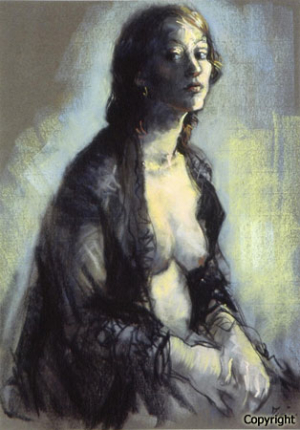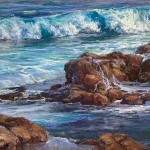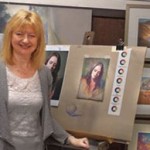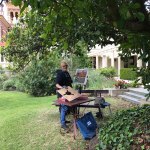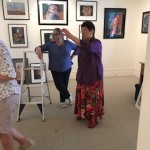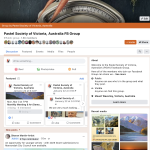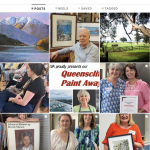The Pastel Society of Victoria (Australia) was founded in 1986 by a group of Pastel enthusiasts – Margaret Lourey, (the founder and first President), Ming Mackay (the first Patron), Arno Roger-Genersh and Janet Hayes, and was officially formed at the first Annual General Meeting on 6th November 1986. Their aims were to educate the public about Pastel and its use as a fine art medium and to promote the exchange of information and ideas concerning Pastel among interested artists.
The Society still upholds the aims of its founders, and has become a very active Society, holding regular meetings, demonstrations, weekend workshops tutored by artists of note, paint-outs and other lively activities for its ever increasing membership. Members are kept up to date regarding these events, as well as being informed about issues in the wider art world, through a bi-monthly newsletter and our monthly meetings. The Society is a member of the International Association of Pastel Societies.
We were saddened by the death of our dear Patron, Ming Mackay in September 2009. Early in 2010 the eminent art historian and friend of the Pastel Society of Victoria, Andrew Mackenzie, accepted our invitation to become our new Patron.
At the 2011 Annual General Meeting members voted to add the location of ‘Australia’ to our name to avoid confusion amongst international Societies who were mistaking us for a Canadian or American Society. Hence we are now known as ‘The Pastel Society of Victoria, Australia’.
What is Pastel and why is it such a special medium!
Pastel is a dry medium of pure pigment, the same pigment used in making all fine art paints. When a pastel painting is framed under glass, it is the most permanent of all mediums, as it has no liquid binder which may cause darkening, fading or cracking with time, as can be the case with some mediums. Pastels from the 16th Century still exist today, as fresh as the day they were painted.
Genevieve Monnier, in her book “Pastels from the 16th to the 20th Century” describes pastels as –
“…powdered colour with an infinite range of shades and gradations of unfading freshness and intensity, spanning more then 1650 nuances of the colour spectrum and peculiarly fitted for ease and rapidity of handling, immediate transcription of an emotion or idea, easily effaced, easily reworked and blended. The pigments can be rubbed in, made luminous and velvety, or given a soft and silky matness of grain. Pastel is line and colour at once. It can also be built up into rich skeins of blended lines, into rapid jottings of all colours creating a dense and brilliant texture. Pastel is a medium of unsuspected range and diversity.”
Pastel does not refer to pale colour, as the word is commonly used in fashion terminology, instead it is derived from the French worked ‘pastiche’. The pure powdered pigment is ground to a ‘paste’ with a small amount of gum binder and then rolled into sticks. The infinite varieties of colours range from soft and subtle, to bold and brilliant. In fact the luminosity of the pastel medium is a constant source of amazement amongst viewers.
Many pastel works hang in National Galleries around the world. During the 17th and 18th centuries notable artists such as Le Brun, Boucher, Lemoine, Carriera and La Tour created some of the most exquisite portraits using pastels. In the 19th and 20th centuries – Toulouse-Lautrec, Degas, Millet, Manet, Gauguin, Whistler, Cassatt, Picasso, Klee, Chagall and Pollock are just a few of the many familiar masters who used the pastel medium.
Quick links
Social Media
is where we post all things ‘business’ for the PSVA such as our Demonstations, Workshops, Paint Outs, Paint Aways, MEA competition and other official PSVA events & information.
Please ‘like’ and ‘follow us’ there.
is for artists and friends to interact with the PSVA on all things soft-pastel related… show us your paintings, engage in discussions, let us know about other pastel workshops, groups and any interesting exhibitions you have been to etc. etc.
With the Facebook Group, all you have to do is answer a couple of questions to join the Group. Then you are able to Post in the Group. Posts are automatically sent to the Admins ‘for approval’. Approval will happen asap – remember we are all volunteers, keeping this wonderful community happening, so don’t be discouraged if this is not immediate.
By maintaining this method of ‘approvals’, we can keep our community safe, interesting and free from scammers.
Please read our Guidelines for Posting, which are pinned to the top of the Facebook Group.




